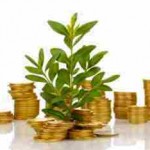
Nairobi – Africa has over 120 carbon market projects up and running or in the pipeline, in areas ranging from wind power to forestry schemes, a new assessment, published today shows.
However, in comparison to the rest of the world, the Continent is still lagging behind, with the potential for clean and green energy largely under-exploited. Meanwhile, the growth in Clean Development Mechanism (CDM) Projects under the Kyoto Protocol remains uneven.
The larger economies such as Egypt and South Africa are still claiming the lion’s share, with 32 and 13 projects respectively. The exceptions are Kenya and Uganda. The number of projects up and running or in the pipeline has jumped from two in 2007, to 15 and 12 respectively today.
In comparison, many countries on the Continent such as Zambia; Madagascar; Cameroon and Mali only have one or two. Equatorial Guinea is among several countries which has none.
These are among the findings compiled by the UN Environment Programme’s (UNEP) Risoe Centre for the opening today of the 2nd Africa Carbon Forum.
Achim Steiner, UN Under-Secretary General and UNEP Executive Director, said: “The growth of the carbon markets in Africa are both cause for optimism, and cause for concern. On the one hand, the work of UNEP and a myriad of other partners on capacity building, catalyzing finance and other barrier-breaking initiatives have been bearing fruit among an ever-wider range of countries”.
“But in order to realize only a few percentage points more of the massive potential for wind, solar, biomass and waste into energy schemes, action across a range of challenges needs to be stepped up,” he added.
Mr. Steiner said this was in part the responsibility of the UN, regional development banks and international funding and donor bodies.
“However, there is also a great deal private national and trans-national banks and individual governments can do to make clean energy investments more attractive through innovative loans and forward-looking policies and smart market mechanisms,” he added.
Mr. Steiner cited the case of Kenya where the introduction of a feed-in tariff (a policy mechanism designed to encourage the adoption of renewable energy sources) rapidly triggered interest by a consortium in establishing Africa’s largest wind farm – a 300 MW scheme in the Turkana region in the north of the country.
“The groundwork has been laid for Africa to boost its participation in the carbon market, which is growing as an important commodity market worldwide,” said John Kilani of the Bonn-based United Nations Framework Convention on Climate Change secretariat on behalf of the organizers of the Africa Carbon Forum.
Under the Kyoto Protocol’s CDM, developed economies can offset some of their emissions at home, by investing in developing country projects in areas such as renewable energy and forestry schemes. The projects can earn valuable, saleable credits called Certified Emission Reductions (CERs) whose value is linked to the traded price of carbon.
“You are bound to do business when you bring all of the key market players together: the investors, buyers and sellers. This forum is therefore bound to boost the number of carbon offset projects in Africa,” said Mr. Kilani.
In a country such as Kenya, this is encouraging expansion of the market, such as geothermal electricity expansion in Naivasha.
Valuable additional income may also be soon generated via tree planting in National Parks and reserves including the Mau Forest Complex. This would be part of the Green Economy’s many benefits for enhancing the country’s ‘water towers’ that in turn support flows to many key river systems.
The new Africa-wide assessment estimates that world-wide, close to 4,900 CDM projects are up and running or in the pipeline – with the lion’s share in the big developing economies such as Brazil, China and India.
Africa Highlights
- Projects that harvest methane gas from landfills to fuel electricity generation are, at close to 20 per cent of all projects on the Continent, the most popular.
- These are followed by projects in biomass energy, 15 per cent; hydro-electric including run of river schemes, 10 per cent; reforestation, 14 per cent; fossil fuel switching, eight per cent and wind power, seven per cent.
- It is estimated that based on the current pipeline, the number of CDM projects in Africa could total around 245 by the end of 2012.
- It is also estimated that by 2012, and with the price of carbon at just over $ 13 a tonne, these could be worth over $ 475 million.
Notes:
The 2nd Africa Carbon Forum is being held at the UN offices in Gigiri, Nairobi between March 3-5, 2011. The event has brought together about 1,000 delegates from countries, the private sector, NGOs and international and intergovernmental bodies.
Source: UNEP.














